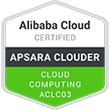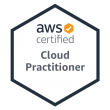Amazon Aurora is a MySQL and PostgreSQL-compatible relational database built for the cloud, combining the performance and availability of traditional enterprise databases with the simplicity and affordability of open source databases. Amazon Aurora is up to five times faster than standard MySQL databases and three times faster than standard PostgreSQL databases. It provides the security, availability, and reliability of commercial databases at 1/10 the cost. Amazon Aurora is fully managed by Amazon Relational Database Service (RDS), which automates time-consuming administrative tasks such as hardware provisioning, database setup, patching, and backups.
Amazon Aurora features a distributed, fault-tolerant, and self-healing storage system that automatically scales up to 128 terabytes per database instance. It offers high performance and availability with up to 15 low-latency read replicas, concurrent recovery, continuous backup to Amazon S3, and replication across three available regions (AZs). Visit the Amazon RDS management console to create your first Aurora database instance and start migrating your MySQL and PostgreSQL databases.
benefits
Fully Managed
Amazon Aurora is fully managed by Amazon Relational Database Service (RDS). You no longer have to worry about database management tasks such as hardware provisioning, software patching, setup, configuration, or backups. Aurora automatically and continuously monitors and backs up your database to Amazon S3, enabling point-in-time recovery. You can monitor database performance using Amazon CloudWatch, Enhanced Monitoring, or Performance Insights, easy-to-use tools that help you quickly identify performance issues.
High Availability and Durability
Amazon Aurora is designed to provide over 99.99% availability, 6 copies of your data replicated across 3 availability zones, and continuous backups of your data to Amazon S3. It recovers transparently from physical storage failures. Instance failures typically take less than 30 seconds. You can also roll back to a previous point in time in seconds to recover from user errors. Using the global database, an Aurora database can span multiple AWS regions to enable fast local reads and fast disaster recovery.
High performance and scalability
Get 5X the throughput of standard MySQL and 3X the throughput of standard PostgreSQL. That’s performance equal to commercial databases at 10/1 the cost. You can easily scale your database deployment from smaller to larger instance types as your needs change, or let Aurora Serverless do the scaling for you automatically. You can add up to 15 low-latency read instances across all three availability zones to scale capacity and read performance. Amazon Aurora automatically scales storage as needed, up to 128 TB per database instance.
Migration Support
The compatibility of MySQL and PostgreSQL makes Amazon Aurora an attractive target for database migration to the cloud. If you are migrating from MySQL or PostgreSQL, see our migration documentation for a list of tools and options. To migrate from commercial database engines, you can use the AWS Database Migration service for secure migration with minimal downtime.
Highly Secure
Amazon Aurora provides multiple levels of security for your database. These include network isolation using Amazon VPC, encryption at rest using keys that you create and control through AWS Key Management Service (KMS), and encryption of data in transit using SSL. In the Amazon Aurora encrypted instance, data in main storage is encrypted, as well as automated backups, snapshots, and similar copies in the same cluster.
MySQL and PostgreSQL compatible
The Amazon Aurora database engine is fully compatible with the open source databases MySQL and PostgreSQL, and new version compatibility is added regularly. This means you can easily migrate MySQL or PostgreSQL databases to Aurora using standard MySQL or PostgreSQL import, export tools, or snapshots. It also means that the code, applications, drivers, and tools you already use in your current databases can be used in Amazon Aurora with little or no change.
use items
Web and mobile games
Web and mobile games built to run at very large scale require a database with high throughput, massive storage scalability, and high availability. Amazon Aurora meets the needs of such highly popular applications with ample room for future growth. Since Amazon Aurora has no licensing restrictions, it fits perfectly with the variable usage pattern of these applications.
Software as a Service (SaaS) Applications
SaaS applications often use multi-tenant architectures, which require high flexibility in instance and storage scale along with high performance and reliability. Amazon Aurora delivers all of these features in a managed database, helping SaaS companies focus on building high-quality applications without worrying about the underlying database powering the application.
Enterprise Applications
Amazon Aurora is a great choice for any enterprise application that can use a relational database. Compared to commercial databases, Amazon Aurora can help reduce your database footprint by up to 90% while improving database reliability and availability. As a fully managed service, Amazon Aurora helps you save time by automating time-consuming tasks such as provisioning, patching, backup, recovery, failure diagnosis, and repair.
Featured Customers

Samsung moves over a billion users across three continents from Oracle to Amazon Aurora, improves latency and scalability while Reduces monthly expenses.

DoorDash uses Amazon Aurora to help it make over 800,000 deliveries per day, manage billions of rows, and nearly 10 terabytes of data in an Aurora cluster.
Amazon Aurora enables Pokemon from Support 300+ million users, including 300 login requests per second, while automating administrative tasks.

Dow Jones has moved its market data service from an internal database to Amazon Shafaq ahead of schedule and without causing any disruption to service.
Featured Partners

Accelerate your Aurora database migration journey with Logicworks, a premier AWS partner with customers like Thomson Reuters, Orion Health, and MassMutual. Do it.

Eliminate database lock-in and achieve database freedom with TekStream and AWS.
Migrating your database to Amazon Aurora
If you are currently using Oracle or Microsoft SQL Server…
The AWS Schema Conversion Tool simplifies the transition from Oracle and Microsoft SQL Server to Aurora by automatically converting the source database schema and most custom code—including views, stored procedures, and functions—to a format compatible with Amazon Aurora. Any code that cannot be automatically converted is clearly marked so that it can be converted manually.
Data migration from Oracle and Microsoft SQL Server databases to Amazon Aurora is easy using the AWS Database Migration Service. You can initiate data migration with just a few clicks, and your source database remains fully operational during the migration, minimizing downtime for applications using that database.
If you are currently using Amazon RDS for MySQL or Amazon RDS for PostgreSQL…
If you are currently using Amazon RDS for MySQL or Amazon RDS for PostgreSQL, migrating to Aurora is as simple as creating a snapshot and launching an Aurora instance from that snapshot. You can follow the simple step-by-step instructions in the user guide to perform the migration. Since Amazon Aurora is fully compatible with MySQL and PostgreSQL, your applications can easily connect to the new instance without any changes.
MySQL and PostgreSQL databases running on Amazon EC2 or on-premises can also be easily migrated. Take a backup of your existing database, upload it to Amazon S3 and use it to directly create an Amazon Aurora cluster. You can also import data stored in an Amazon S3 bucket into an existing table in an Amazon Aurora database. Standard MySQL import and export tools or MySQL replication between blogs are also supported. Migration to Amazon Aurora from supported databases running on Amazon EC2 or on-premises can also be done using the AWS Database Migration Service.









